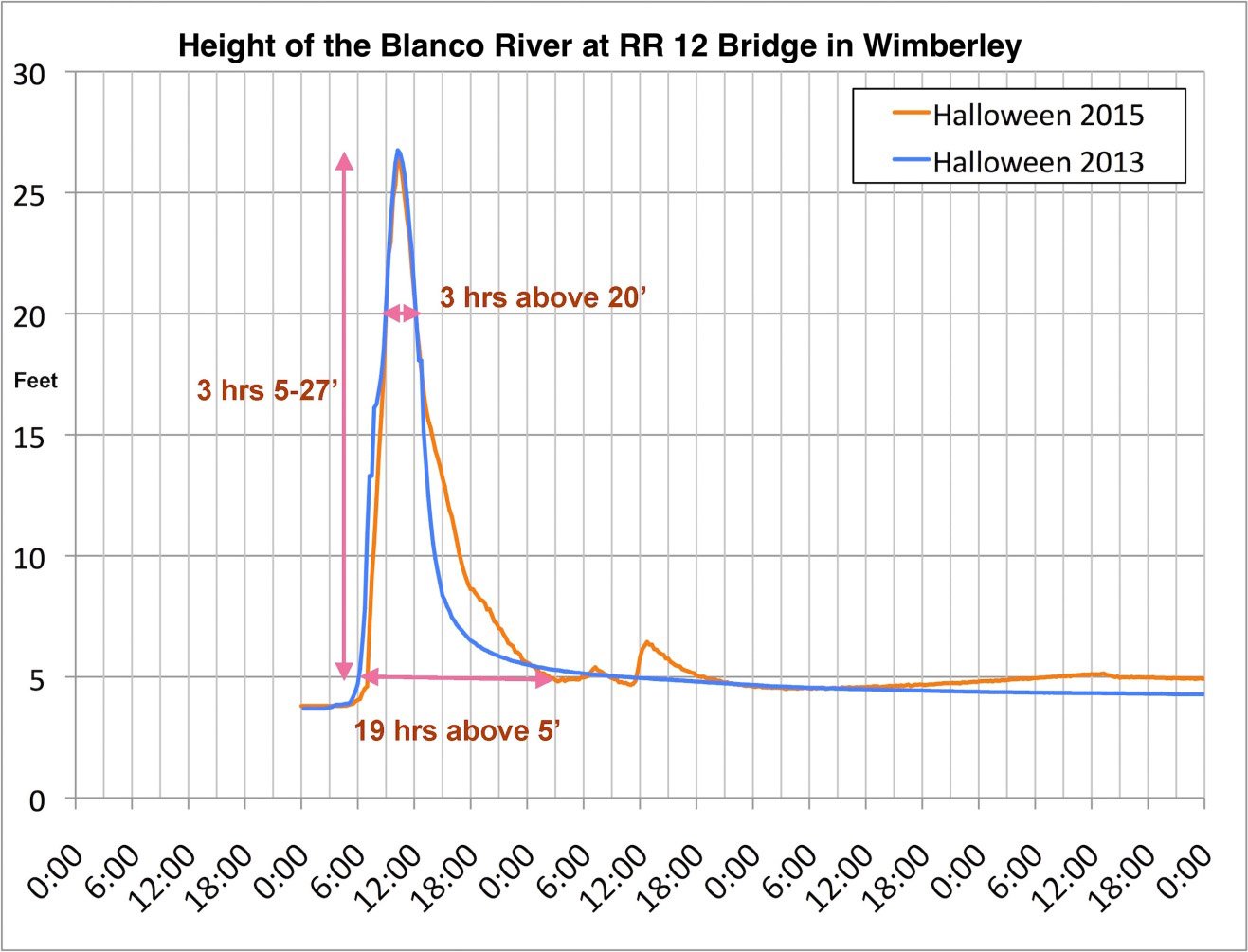Flood Control
Flash floods have been part of the Hill Country for over ten million years, ever since the rivers and creeks began carving out their deep valleys and leaving behind 200-250 ft. high hills. While we can’t stop flash floods, we can reduce their intensity and the amount of damage they cause.
This is a graph of the river height at the Ranch Road 12 bridge in Wimberley during two recent flash floods on the Blanco – Halloween of 2013 and 2015. In both flash floods, the water rose from five feet to twenty-seven feet deep in only three hours because the heavy rains ran off into the creeks and river too quickly. The narrow peak shows that the river was only above twenty feet for a few hours and back down to five feet in less than a day. Simply put, flash floods occur when the runoff from heavy rains gets into the creeks and rivers and flows down them faster than the natural channel can control normally.
If we delay some of the runoff, even for as little as a few hours, we can reduce the intensity of the damage caused by flash floods. For example, the incremental volume of water at the peak of the Halloween 2015 flash flood is the equivalent of one inch of rain over 90,000 acres or 40% of the watershed upstream of the Ranch Road 12 bridge. If that amount of runoff had been delayed by three hours, the same amount of water would have gone under the bridge, and reduced the maximum height of the river by seven feet and prevented the damage from the flooding.
Delaying runoff from heavy rains is not too difficult with the correct knowledge. It does take planning to delay the runoff of the first inch of rain on a property for three to five hours. It can be done by installing any or all of the following; drainage diverters, rain gardens, soil berms or low stone walls, stock tanks or retention ponds. When many property owners participate in this endeavor, the results are increased exponentially. Flash flooding is primarily a problem for residents near the creeks and rivers, but by delaying runoff, every landowner can be part of the solution.
Links & Resources
A Case Study Using Drainage Diverters, Berms, and a Filtering Wall
Even wikiHow Can Help Erosion Control!


